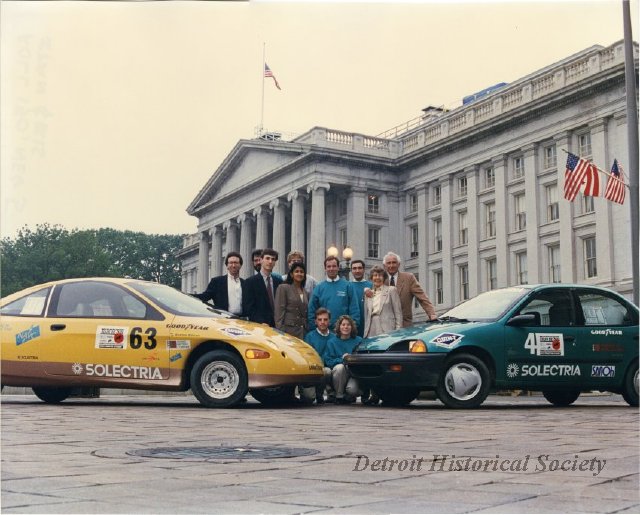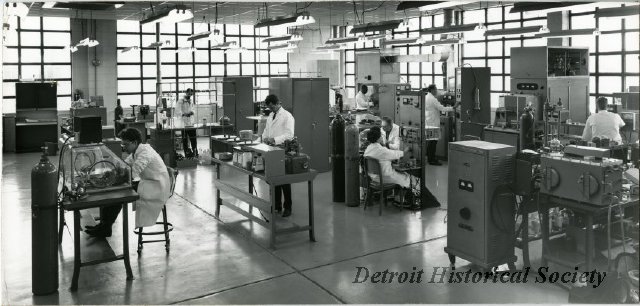Encyclopedia Of Detroit
Ovshinsky, Stanford
Stanford Robert Ovshinsky was a prolific American inventor and scientist who was granted over 400 patents in his lifetime, and was responsible for the invention of a wide range of environmentally friendly energy resources. Because of Ovshinsky’s numerous contributions to the fields of energy and information technology, he has been compared to great minds like Albert Einstein and Thomas Edison.
Born on November 24, 1922 in Akron, Ohio, Ovshinsky worked as a tool maker and machinist in local shops affiliated with the rubber industry before and after graduating from high school in 1941. Learning from his father’s example, Ovshinsky developed a deep commitment to social ideals, including labor and civil rights, at an early age. With no formal education beyond high school, Ovshinsky was self-taught; his passion for science and his social convictions being the primary forces behind his inventive work. Shortly before the end of World War II, Ovshinsky established his own business, Stanford Roberts Machine Company, in Akron. There he developed and patented his first invention, the Benjamin Center Drive Lathe, named after his father who had recently died.
In 1951, Ovshinsky moved to Detroit, Michigan to work in the automotive industry as the director of research at the Hupp Motorcar Company where he invented a new kind of automatic transmission, and electric power steering. Soon after, Ovshinsky and his younger brother Herbert established General Automation in a Detroit storefront on West McNichols Road. It was around this time that Ovshinsky met Iris Dibner, his future partner. Already married to others, each divorced their respective spouses and married in 1962. With a PhD in biochemistry and raised by radical parents, Iris became intimately involved in Ovshinsky’s work.
In 1960, the Ovshinskys founded the Energy Conversion Laboratory in Detroit, dedicated to solving important societal problems using science and technology. Focusing on the fields of energy and information, this new company, renamed Energy Conversion Devices (ECD) in 1964, was intended to bring a commercial aspect to the innovative development laboratory, whose products contributed to the development of alternative energy sources, such as solar panels. The company moved to Troy, Michigan in 1965, and eventually to Rochester Hills.
Iris Ovshinsky tragically drowned on August 16, 2006. A year later, Ovshinsky married physicist and colleague Rosa Young and continued collaborating. In 2008, Ovshinsky established a new company, Ovshinsky Innovation LLC, and Ovshinsky Solar, where he worked toward the creation of revolutionary energy and information technologies.
Some of Ovshinsky’s most notable inventions include: an environmentally friendly nickel-metal hydride battery which has been used in laptop computers, digital cameras, cell phones, electric and hybrid cars, flat screen liquid crystal displays (which he predicted in 1968), rewritable CD and DVD computer memories, and hydrogen fuel cells. With more than 300 publications, Ovshinsky won countless awards and ten honorary doctorates for his contributions to science and innovation.
Stan Ovshinsky died at age 89 on October 17, 2012 in Bloomfield Hills, Michigan. His companies, or their subsidiaries, remained in operation following his death.



